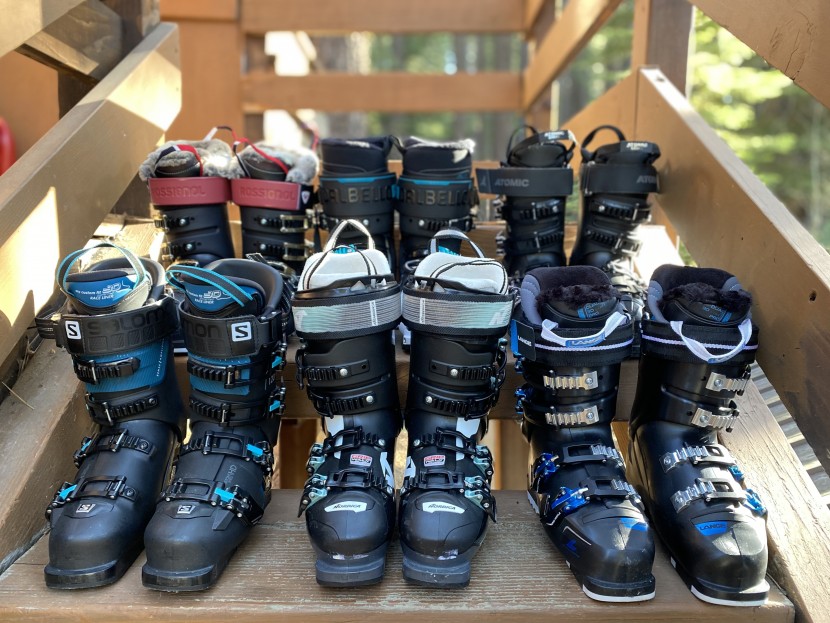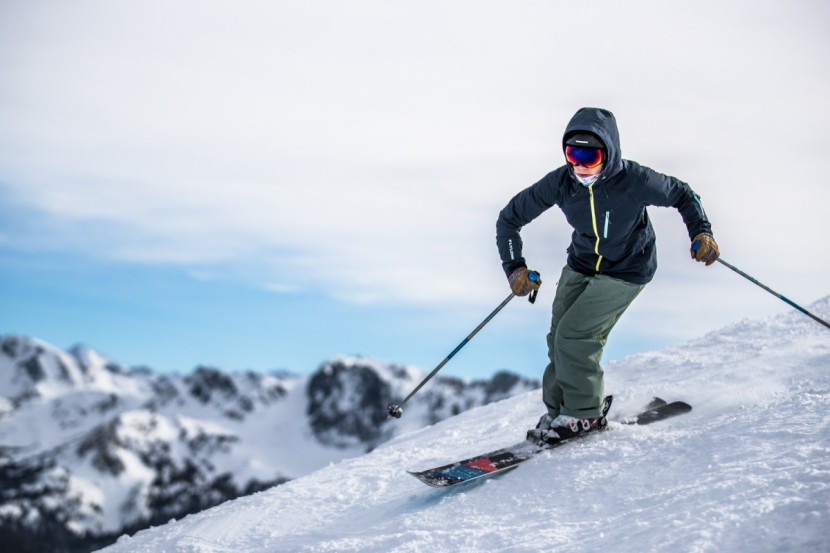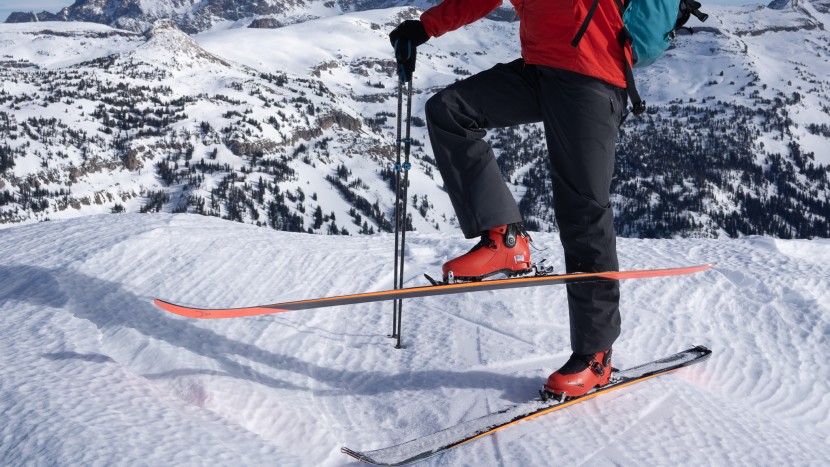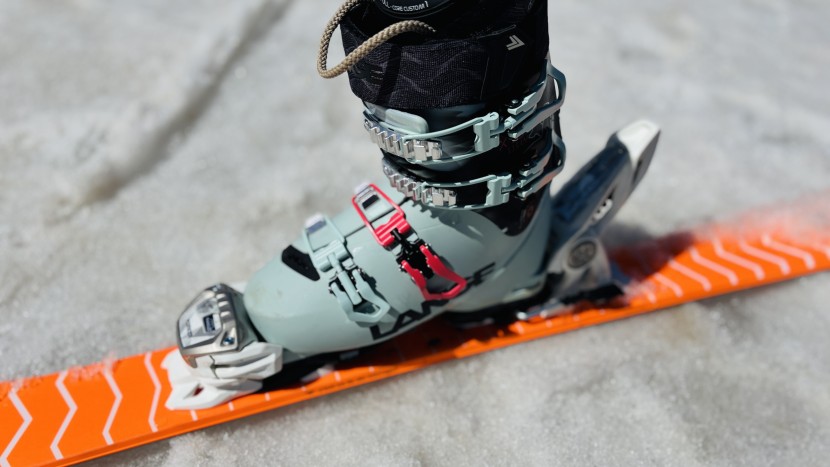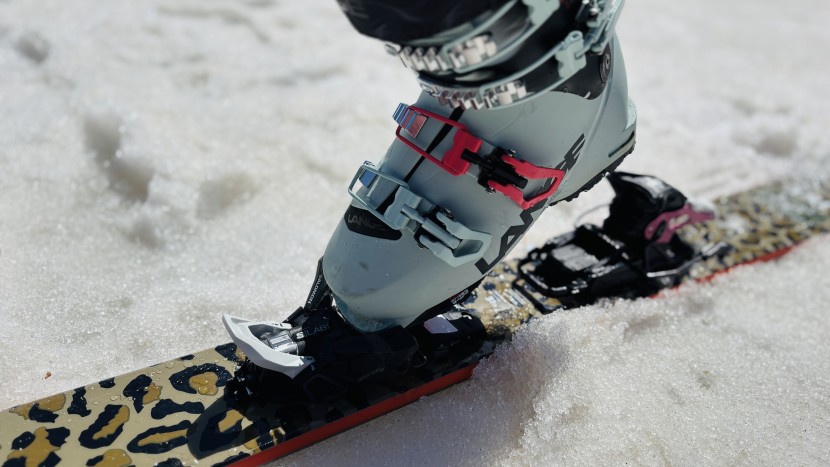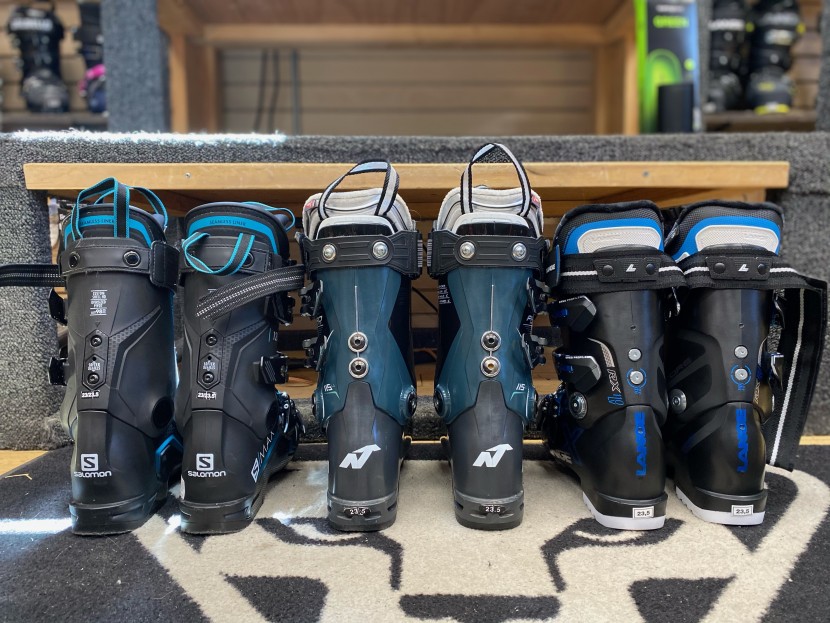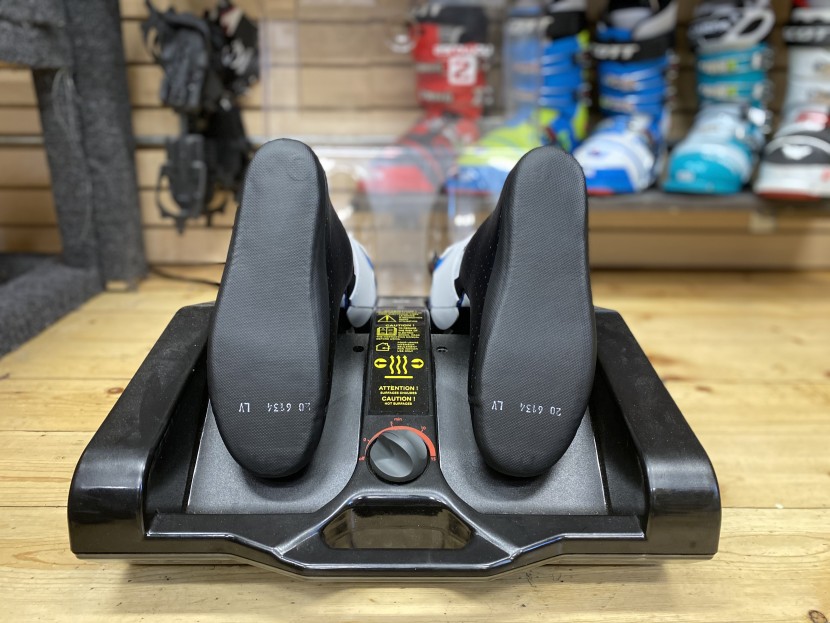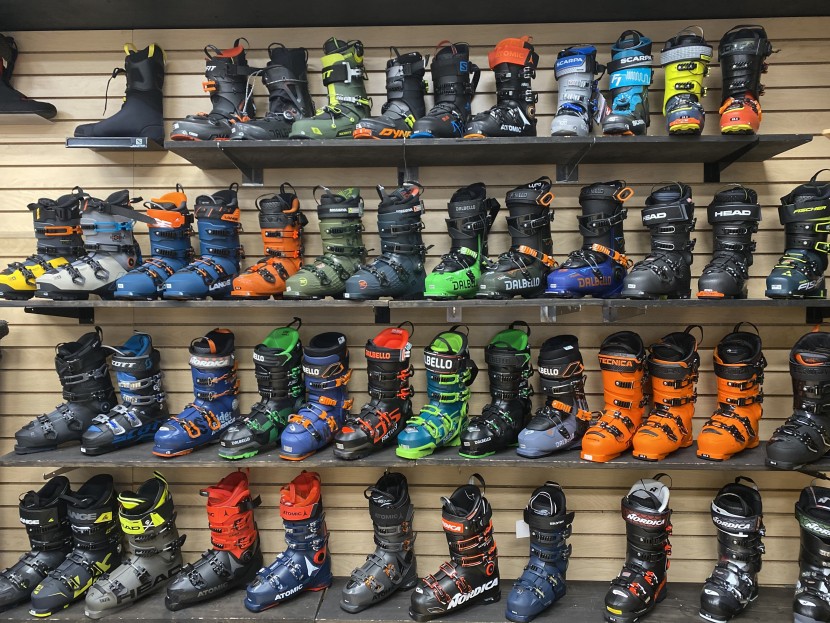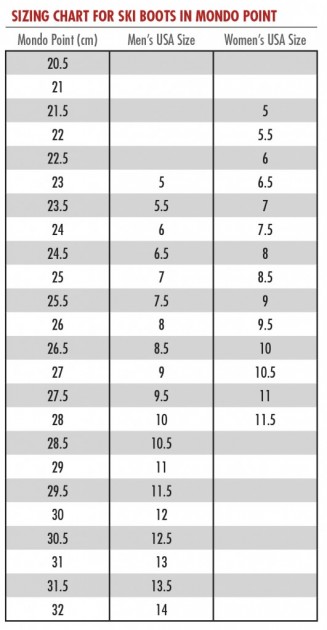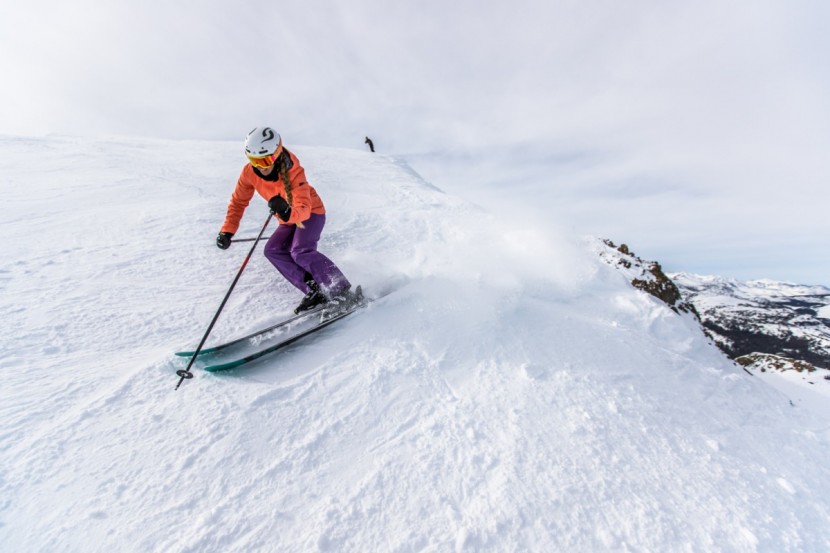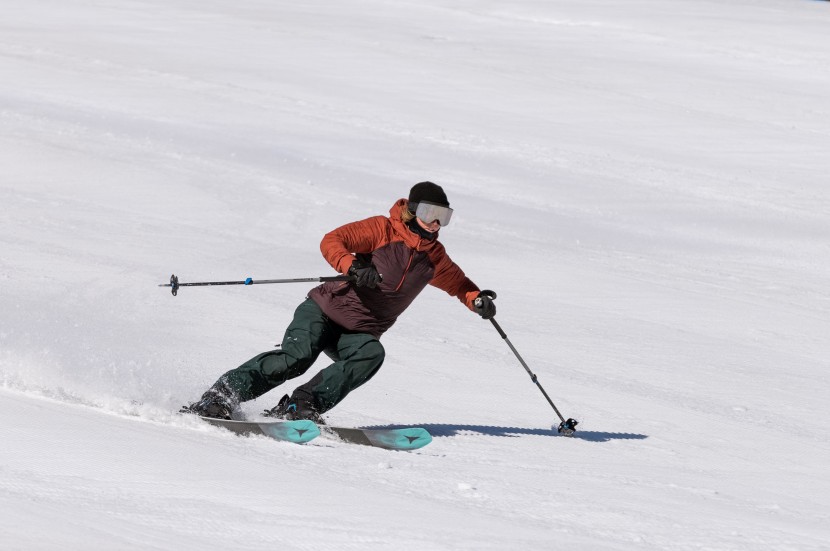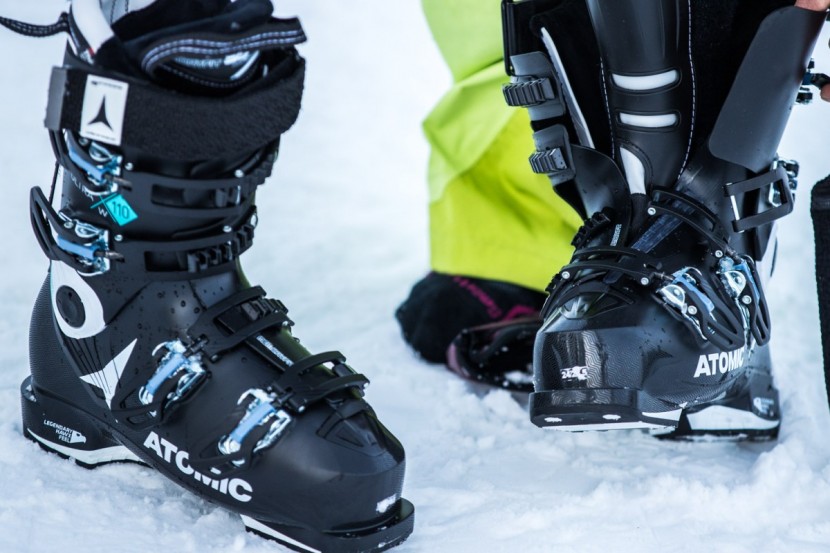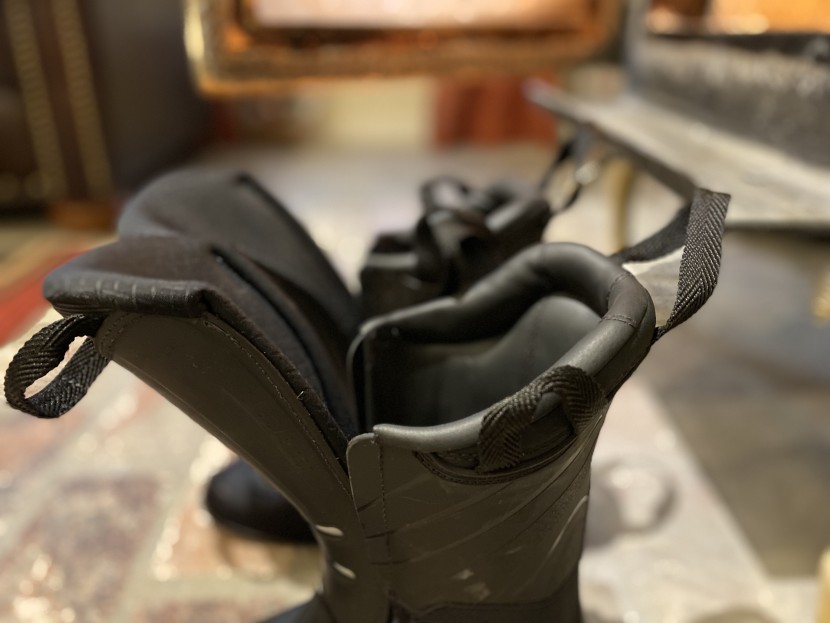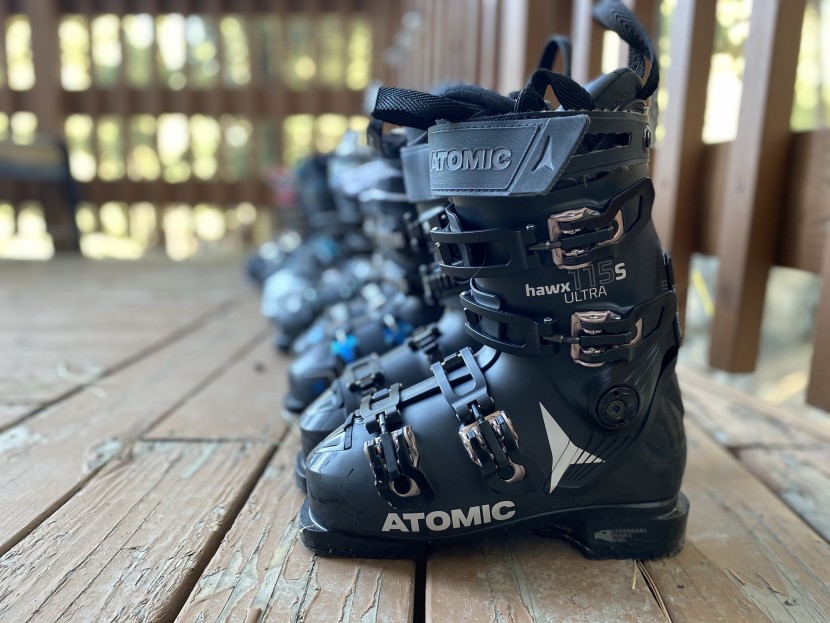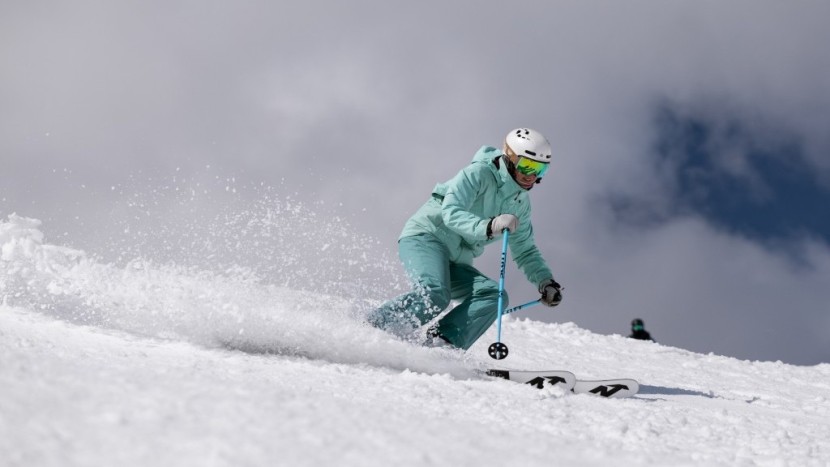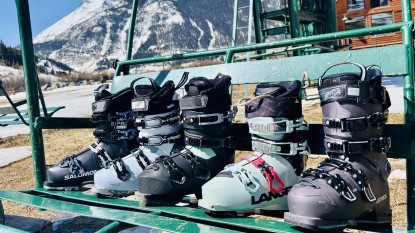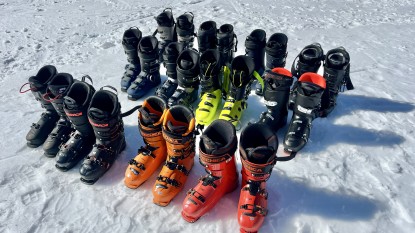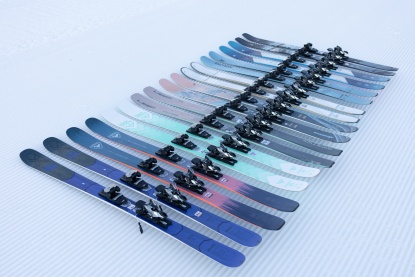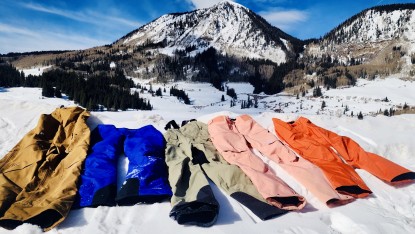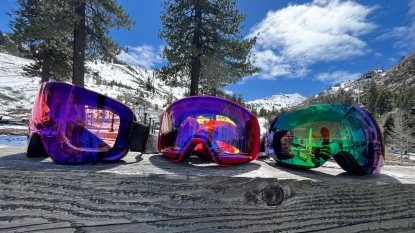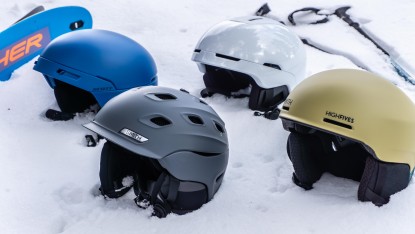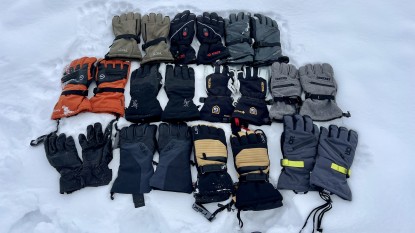Choosing the right ski boot can be a frustrating and time-consuming process. This process is crucial, though, because boots greatly impact your performance and your comfort, and therefore your enjoyment of the sport of skiing. Some of the first decisions you face are determining what type of boot you want, being realistic with your own abilities, and figuring out what features are essential.
In this article, we want to help you become more informed about what you should be looking for when you are shopping for a ski boot and to help you sort through the flashy marketing jargon to find the important features that will make a difference for you. Read on to get you started on your epic boot-buying journey.
Related: The Best Ski Boots for Women
Types of Ski Boots
The first task is sorting out what kind of skiing you will be doing. Are you going to be jibbing at the park all day or just cruising down the corduroy? Do you want a lightweight boot with a walk mode for side-country skiing, or are you an aspiring racer? Here is a breakdown of some of the different types of boots on the market.
Alpine Boots
This category has many sub-categories, but they are all meant for going exclusively downhill at lift-accessed ski resorts. There are three main categories: Race, All-Mountain, and Freestyle. Race boots are specifically designed for downhill performance. They are stiffer, have an aggressive forward stance, and have a narrower fit for extreme responsiveness. These are boots designed for competition and are generally not made for the average skier.
If you are more interested in skiing in the park all day, hucking your meat off of big jumps, or sliding rails, you should look into freestyle boots. These boots often have a cabrio construction and extra features for shock absorption. Manufacturers have categories like freeride or big mountain for boots with specialty sport-specific features. Full Tilt and Dalbello are two brands with ample experience in cabrio construction.
All of the boots we tested in our women's review fall into the All-Mountain category. These boots are for anyone from beginner to expert ability, and of all ages and foot types. The design of an all-mountain boot falls somewhere between race and freestyle boots. Some boots lean more towards the race spectrum, while others are more freeride oriented. Either way, these boots are designed to help you ski in any snow condition, anywhere on the mountain.
Alpine Touring Boots
This category of boots is specifically for people who want to get out into the backcountry, climbing up and skiing down mountains on an alpine touring setup. These boots are meant to be lightweight and include a walk mode for an increased range of motion. Often, performance takes a back seat with these boots because they have been stripped down for greater mobility and weight savings. Although we did not test any alpine touring boots in this review, we have an in-depth review dedicated to backcountry ski boots.
Hybrid Alpine Boots
As the name suggests, this relatively newer category of boots is a hybrid of traditional alpine and alpine-touring boots. These feature a walk mode, which makes them great for hike-to terrain, and tech binding inserts in the heel and toe, which make them compatible with touring bindings as well as traditional alpine bindings. While there are inherent compromises to trying to have it all, these are a reasonable option for folks who mostly ski in-bounds with an occasional foray into the backcountry.
Sizing and Fitting
Fit is arguably the most important factor when deciding on a boot for skiing. If your boots don't fit properly, then they won't perform properly — and you won't want to have them on your feet for long. Depending on your level of ability and what type of terrain you ski, you may want a more relaxed, all-day cruiser fit or a more snug, aggressive, performance-oriented fit. Below, we address some things to consider when fitting your all-mountain boots.
Sizing
Ski boot sizing is measured using the Mondo Point System. Mondo point is the length of your foot in centimeters. If your foot is 24.5 centimeters long, then your mondo size is probably 24.5. Shops and boot fitters use a Brannock device to measure your feet accurately. If at home, you can also trace your foot on a piece of cardboard, keeping the pen vertical against your foot to leave a slight border. Then, measure the length from the heel to the longest part of your foot and round off to the nearest half centimeter. If you are an advanced to expert skier, you may want to size down for a performance fit. Most manufacturers make their boots available in half sizes like 27.5 and 28.5. If you fall between these sizes, remember that it is much easier to make your boot bigger than smaller - it is easy to make modifications to your liner to accommodate your foot, so rounding down is recommended.
Last Width
The widest part of your foot (the forefoot) is also important to determine. Ski boots generally come in narrow, medium, or wide widths. This translates to low volume (LV), medium volume (MV), and high volume (HV) lasts. Narrow last boots are typically 97 to 98 millimeters wide, medium boots are usually 100 to 102 millimeters, and wide boots can range anywhere from 102 to 106 millimeters. These last numbers are generally a representation of the volume of the boot around the ankle and forefoot. Manufacturers do not quantify the volume of their boots, so you can use the last width as a general guide.
Stiffness & Flex Ratings
Now is the time to realistically assess your skiing ability. The flex rating of a boot indicates how hard it is to push the front of the boot forward and is usually an indication of how advanced or aggressive a skier is. Flex ratings for adult female ski boots often range between 70 and 120, with 70 being the softest boot and 120 being the stiffest boot. Unfortunately, these numbers are not standardized across the market and can vary by brand, so use them as a guide to point you towards the right level of stiffness for your ability.
Beginners should choose a softer flex boot that will be more forgiving when they make errors, as well as more comfortable and easier to get on and off. If you are an advanced skier or a little heavier, you may want to go with a boot with a stiffer flex level, which will be a little more responsive, likely between 100 and 120. Luckily, all the boots we tested come in a range of flexes for most abilities — although they probably start off at intermediate.
Tips for Fitting
As counterintuitive as it may seem, your toes should be touching the end of the boot when you slip it on. Once you lean forward and press your shins into the tongue, your feet should move back in the boot, pulling your toes slightly away from the front. If your toes are cramped or curled, the boot is too small. If there is too much wiggle room in the front, the toe box may be too big for you, and you may need a lower volume or shorter boot. Additionally, take notice if your heels lift when you lean forward. Heel lift = bad performance. And the most important thing to remember is that every brand has a different line of boots that go by different standards and undergo different engineering processes. If one low-volume boot does not fit you, that does not mean another one won't. Shop around and be open-minded to all options in your size and ability range. If your boots are too big already, you may need to size down or try a different boot style.
Customization
We highly recommend working with a professional boot fitter when choosing to modify your boots. Or, if you order them online, go visit a boot fitter in your area to get your boots totally dialed in. As downhill skiing has become more popular among the general public, boots have become more adjustable and customizable. A professional boot fitter will know all the ins and outs of how to tweak them just right for you.
Liners & Footbeds
Nowadays, almost all adult alpine ski boots on the market have thermo-moldable liners. While brands are pumping their R&D dollars into creating the best out-of-the-box fit for their consumers, you may need to pay a little more attention to fit your feet just right. Because there is such a direct link between fit and performance, we suggest you spend the time making the necessary adjustments to enhance the fit of your liner. If the stock liner is not the right one for you, there are a few aftermarket liner companies to look into, such as SureFoot and Intuition Liners.
It is now standard practice to get a custom footbed when working with a boot fitter as well. Custom footbeds will change your boot for the better, providing more support under the arch and a snugger fit. They help with comfort, fit, and ultimately the performance of your boot. Manufacturers now anticipate that the majority of consumers will buy aftermarket footbeds, and as a result, usually include flat and flimsy place-saving footbeds. We wouldn't recommend using these. If you're still experiencing pain in the boot after molding the liner or making adjustments, you may want to look into new footbeds.
Shells
There are two dominant types of shell constructions on the market: two-piece and three-piece shells. The two-piece construction is also known as an overlap boot, which most often has four buckles. Nowadays, the majority of alpine ski boots are two-piece. Simply put, this construction delivers more linear, powerful, and responsive energy, particularly for those who point it straight down the mountain. These boots are likely to offer less torsional freedom than a three-piece boot, though their ability to drive on hardpack is unmatched.
A three-piece construction, also known as “Cabrio construction,” is made of a base piece (surrounding the foot), spine, and tongue and often has three buckles rather than four. Boots with Cabrio construction are known to have a more progressive flex, which means the boot gets stiffer as you lean into the flex. Oftentimes, it has more torsional freedom, which is why you see three-piece designs in freestyle or freeride-oriented boots. While it's not entirely noticeable as a skier, you lose micro amounts of energy and control with a three-piece boot.
Most boot shells have customizable features, including different grommets to adjust the position of buckles, adjustable boot boards to change your ramp angle, and forward lean adjustments to alter stance. If you have strangely shaped feet that are extra wide, bone spurs, or other issues, a trained boot fitter may be able to “punch” out space in your boot's shells in problem areas. Some boots already articulate problem areas like the navicular and ankle bones to save you a step at the boot fitters.
Cuff and spoiler adjustments can change the fit around the calf to add space for those with big calves and narrow feet. Higher performance boots have screws on the back of the spine to adjust the forward lean of the boot, which will change your stance to more or less aggressive. Some boots also come with cuff alignment or “canting” adjustments that allow the shell to be flexed inward or outward on a horizontal plane. This correction is made for individuals whose knees may bend inward or outward. Other features that can come in handy to enhance comfort and fit include micro-adjustable buckles or a walk mode. Walk mode is often found in lower flexes and is less frequently seen in higher flex boots.


